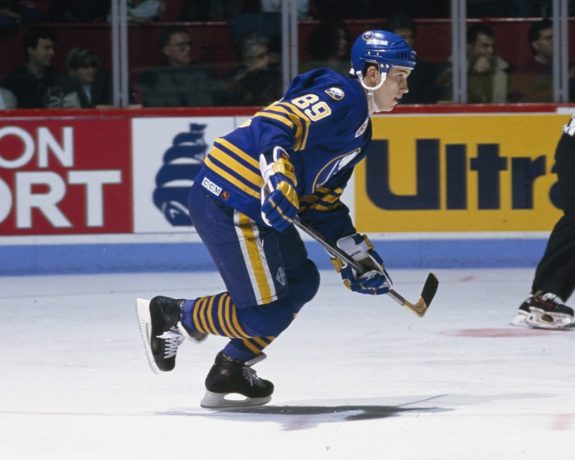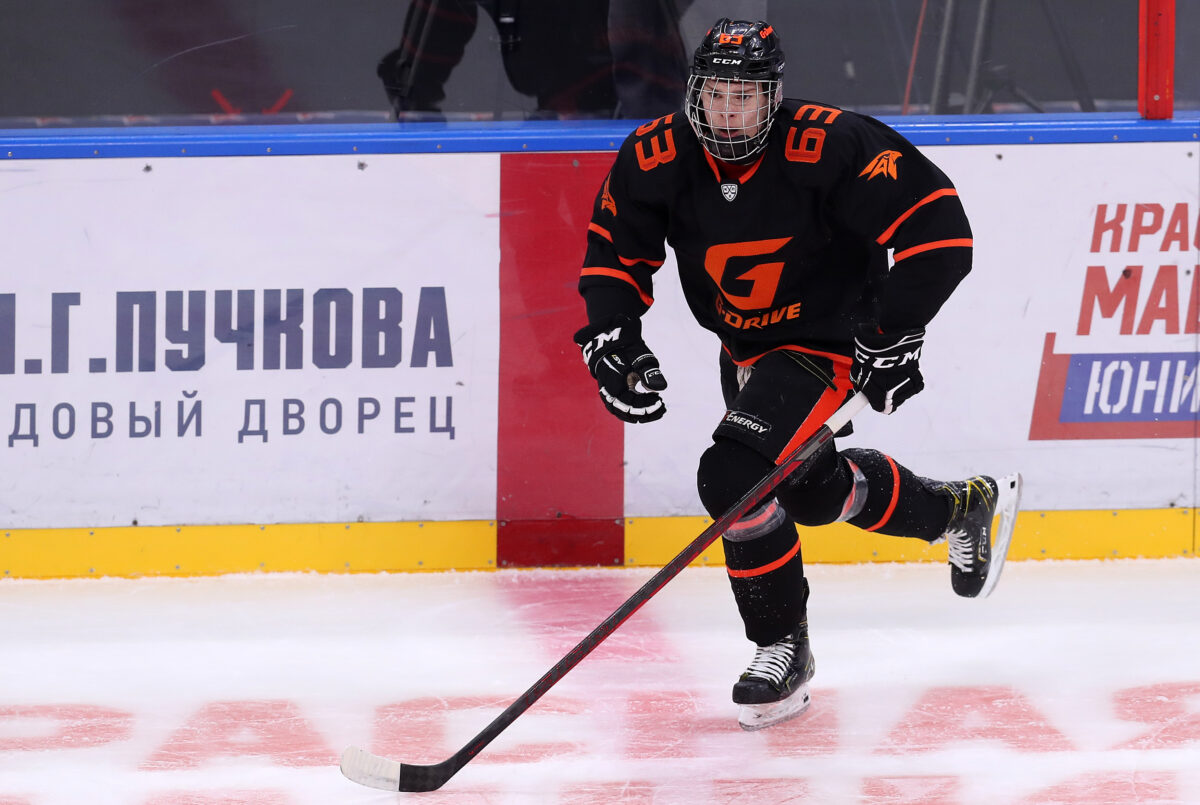The “Russian factor” has been an issue of varying significance since the late 1980s. In 1989, Alexander Mogilny became the first Russian hockey player to defect from the then-Soviet Union in order to play in the NHL. He and several others risked their lives and the lives of their families to come to North America simply to play a sport. This issue has been renewed recently and will undoubtedly affect where Russian prospects will be drafted, or in some cases if they are drafted at all.
The NHL Russian Factor
After the fall of the Soviet Union in 1991, the Russian Factor became less high risk and more a waiting game as it took a few years to allow drafted prospects to finish their mandatory military service or play out their contracts with local professional leagues. In some cases, NHL teams would negotiate a compensatory payment to the losing Kontinental Hockey League (KHL) club to allow that player to sign his Entry-Level Contract (ELC).

For several years, the “Russian factor” was a minor inconvenience. However, this Entry Draft will face a renewal of the Cold War Era issues that made the Russian factor a major roadblock to Russian players being selected.
Related: THW 2022 NHL Draft Guide
Now, due to the Russian invasion of Ukraine, the global political climate has become highly volatile, especially for businesses like the NHL and their clubs. Leaving an uncertain future when it comes to Russian-born and trained players. making the future highly uncertain. This uncertainty leaves NHL general managers (GM) with a bias against selecting Russian players, especially early in the draft, so as not to “lose” a high pick on a player that ends up as a bust because they never make it to North America.
The Fedotov Nightmare
An extreme example of this factor is playing out in the news. Ivan Fedotov is a 25-year-old, 6-foot-7 goaltender drafted by the Philadelphia Flyers in 2015. In May, he was signed by the Flyers to a one-year ELC and was expected to compete for the role of backup to Carter Hart.
The Olympic silver medalist was arrested by Russian authorities on July 1, who alleged that he had evaded military service and illegally broke his contract with the KHL’s CSKA Moscow. A move CSKA Moscow management reportedly did not appreciate.
That last part may ultimately be the true reason for the detention. CSKA is owned by the Russian mega-corporation Rosneft, which provides hundreds of billions of dollars in profit to Russian Oligarchs including Vladamir Putin. Losing a star goaltender to the NHL would be yet another blemish on the reputation of the Russian-based league. The questionable treatment and possible assault on the young netminder point in that direction too.
In a 24-hour period, Fedotov’s nightmare went from a possible mistake to him facing two years in prison, to possibly being conscripted to join the Russian invasion forces in Ukraine. At the end of the day, the future health and freedom of a young man are in jeopardy.
Risky Russians
Fedotov’s story could be a cautionary tale for NHL GMs thinking about using their higher picks to add any Russian prospects in the current global political climate. This year’s crop of prospects from Russia may not be their best one but it does have a handful that might be deemed worth the risk of a late first-round or early second-round pick.
Danila Yurov, Right Wing
Danila Yurov is a dominant offensive player in the MHL, the Russian junior league. He’s a strong, shifty skater who likes to keep possession of the puck, leading the breakouts and using his speed and puck handling skills to fool defenders. If not for the Russian factor he would comfortably be in the top ten of this draft. A team with multiple first-round picks will most likely see the risk as minimal when they can take a home run swing on a high-end prospect who may be available in the mid to late first round.
Gleb Trikozov, Left Wing
Ranked as a late first to a second-round pick, Gleb Trikozov may slide into the third round thanks to the “factor” where a team with multiple picks would likely take a chance. His skating is still a work in progress but his offensive skills are impressive. Excellent positioning, play anticipation, and a hard and accurate shot have allowed him to score 23 goals and 45 points in the Russian MHL.
Ivan Miroshnichenko, Left Wing
There were some draft lists that had Ivan Miroshnichenko listed as a possible top-ten pick. His size, mobility, speed, and heavy shot all pointed to him becoming a top-line winger in the NHL. This was before he missed the season due to a bombshell of a Hodgkin’s Lymphoma diagnosis. He has since been cleared to resume training. While health will be a major factor in any decision to draft the 18-year-old winger, his Russian passport complicates matters as well. That being said, if a GM is willing to roll the dice and gamble on him returning to his projected path and that he can be pried away from his homeland, he could become a high-quality pick.

Pavel Mintyukov, Defense
Despite Pavel Mintyukov being a Russian national, the “factor” may be lessened by the fact that he has been playing in North America for the Ontario Hockey League’s (OHL) Saginaw Spirit. The left-handed puck-moving defenceman oozes raw offensive talent, scoring 17 goals and 62 points in 67 games played. He also has some raw defensive skills that could be developed to make him a top-pair capable player. That rare commodity could entice a GM to risk a late first-round pick in a gamble that he will gain a prospect that will be considered a steal in a few seasons.
The Russian Factor will play a role in several prospects sliding down the draft boards, some even being left off draft lists altogether. Despite this, there is a market inefficiency that can be manipulated to the benefit of NHL clubs who have multiple mid-round picks, patience, and a GM willing to make bold moves. In a draft year where the best player after five years is possibly not taken in the top three picks, it’s a risk that might end up paying off.